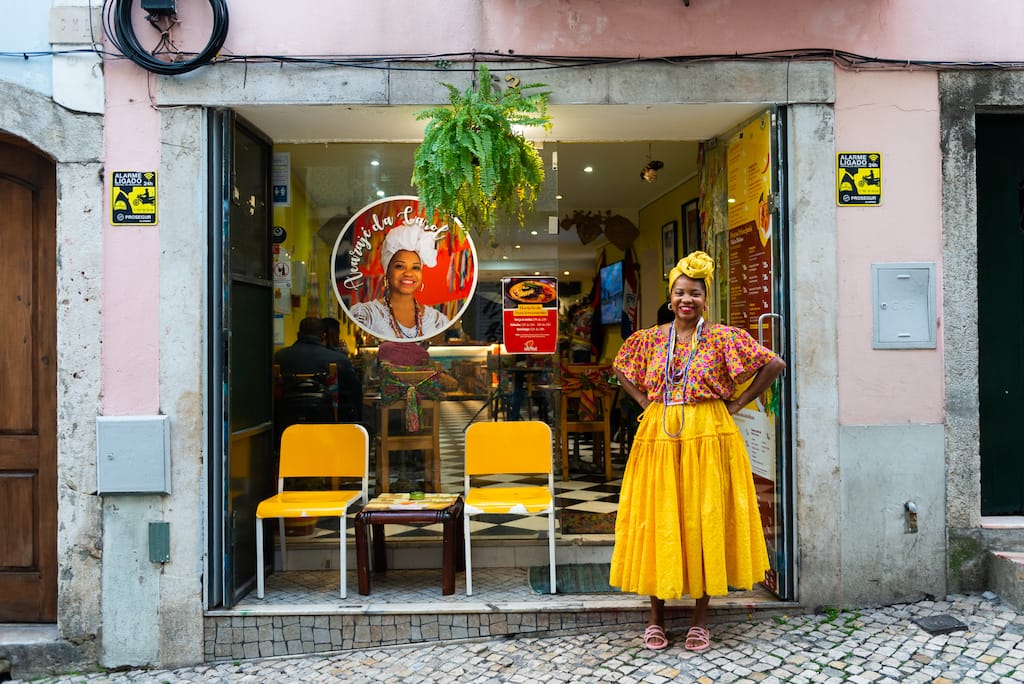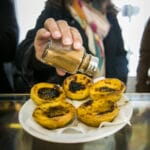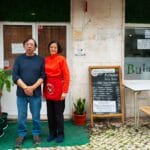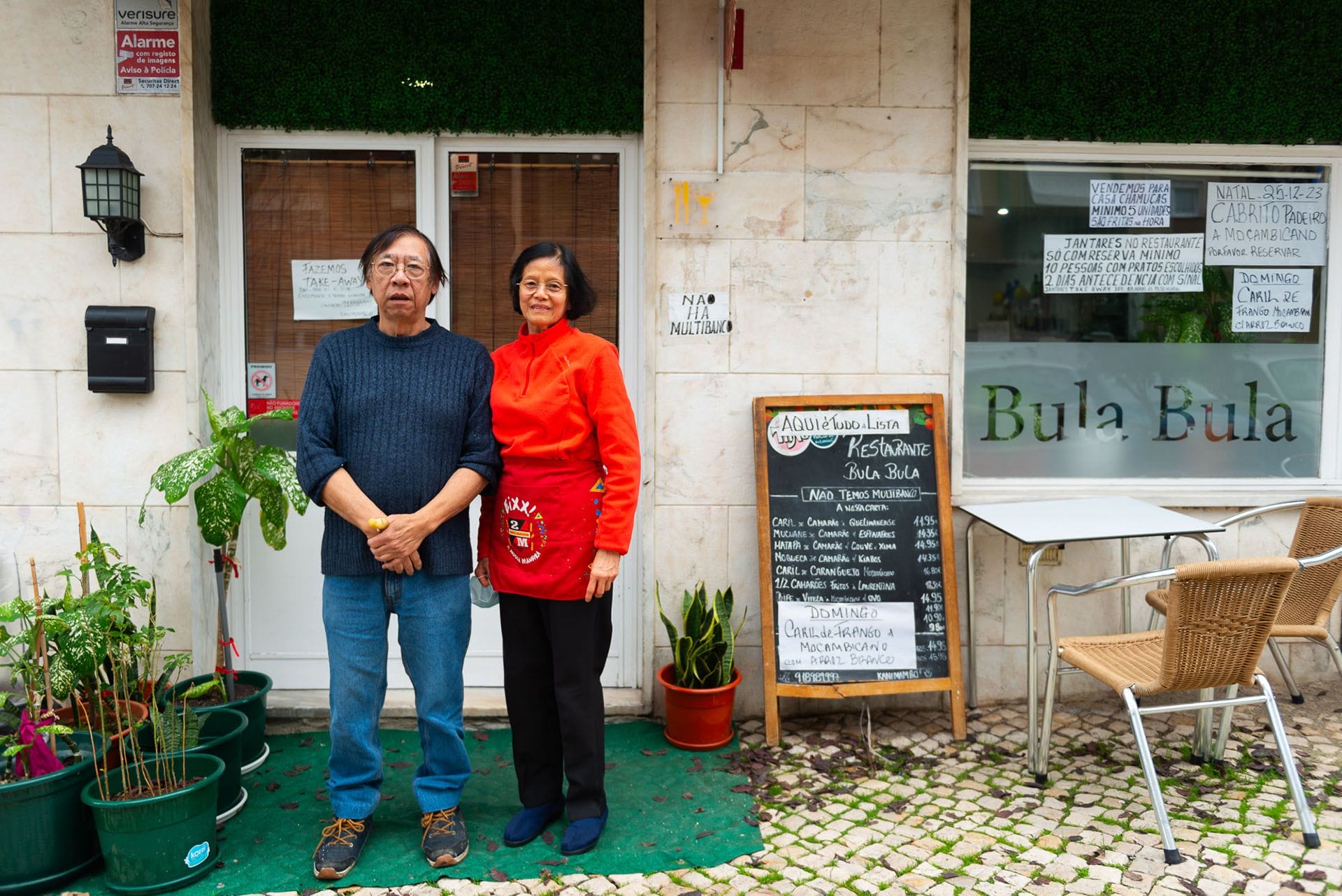It’s a bit of culinary magic. Plain old black-eyed peas are transformed into a fluffy white cloud, before somehow changing once again, this time into a crimson, crispy fritter. This is acarajé, and as a dish with origins in Bahia, the homeland of Afro-Brazilian spirituality, other types of magic can also play a role.
In Lisbon, you can witness the results of this transformation at Acarajé da Carol.
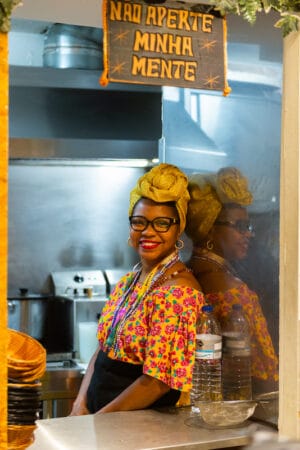
“There are other people [in Portugal] making acarajé, but they’re not from Bahia!” the eponymous owner – full name Carol Alves de Brito – tells us. Bahia, Carol’s homeland, is the region of Brazil with the strongest links to Africa. Salvador, the state’s capital, was once a major destination in the trans-Atlantic slave trade, and today it’s the largest Black city outside of Africa. The state became a conduit for African food, culture and religion, and acarajé blends all three of these elements. Even today in Brazil, acararjé remains tied with Afro-Brazilian customs and rites; the vendors – exclusively women – who sell the dish in Bahia wear white dresses linked to religious ideas of purity, and acarajé is given as an offering in Candomblé (a religion that blends West African and other spiritual beliefs) ceremonies. It’s a dish with a deep sense of culture and place, and for many eaters, the person who’s making it matters.
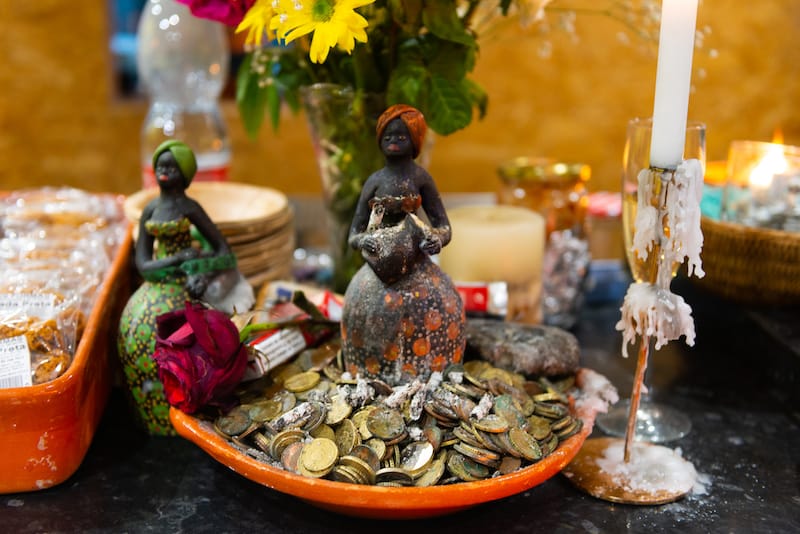
The word acarajé is likely derived from a Yoruba word for “bread” or “pastry,” and several countries in west Africa have fried snacks with similar sounding names. Black-eyed peas were cultivated early on in Africa, as well as raw palm oil, another crucial element in making acarajé. Ostensibly brought to Brazil by enslaved people, the dish served a culinary and spiritual link with their homeland, and these days, according to Carol, “In Bahia, you’ll find an acarajé vendor on every corner.”
In her tiny kitchen in Lisbon’s raucous Bairro Alto neighborhood, Carol walks us through the process of making acarajé. First, black-eyed peas are soaked for several hours. They’re then “massaged” to remove them of their skins and the “eyes.” The beans are processed with salt and garlic, then whipped with a paddle until the mixture has the texture and appearance of a light hummus.
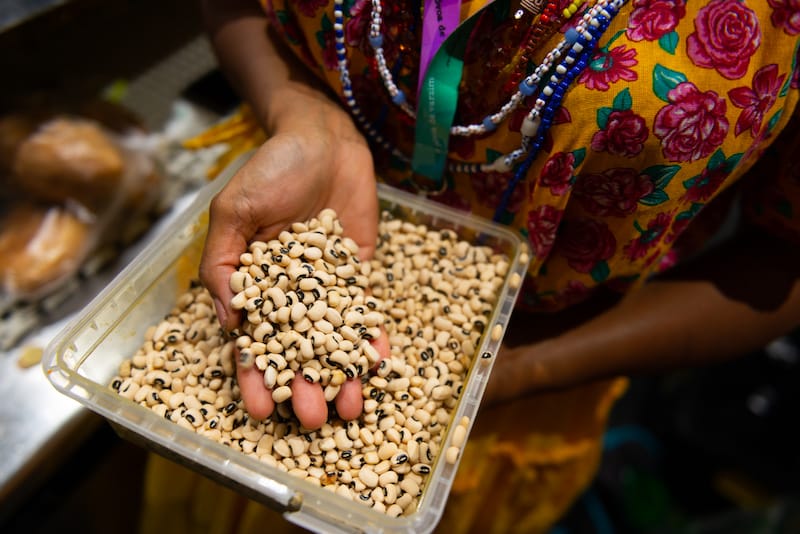
“I can get all the ingredients I need here in Portugal,” Carol tells us “The important part is to get the beans and to prepare them properly. And these,” she says, showing us her hands.
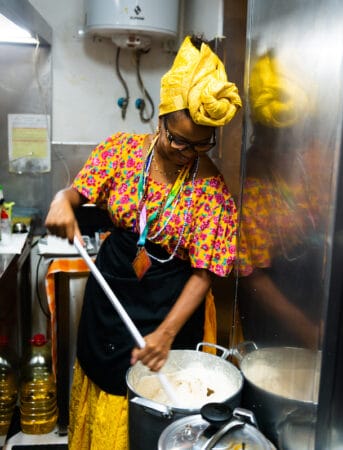
To cook acarajé, Carol scoops the batter into a quenelle-like shape, which is gently dropped in a vat of sizzling unrefined, unfiltered palm oil, also known as dendê oil. The oil boasts an orange, almost red hue and is what gives the finished dish its deep orange color.
“Acarajé are much more expensive in Portugal,” Carol tells us as she flips the fritters. “Here, dendê oil costs three times as much!” She fishes a fritter from the oil and slices it in half to reveal that the crispy, deep-orange exterior hides a cottony, white interior.
As she fries more orders, Carol tells us that she left Bahia for Portugal 20 years ago, initially arriving in Porto, before getting a job working at a Brazilian restaurant in Lisbon.
“In my time off, I made acarajé for the Casa do Brasil, for the Brazilian embassy or for events,” she tells us. She honed her recipe and ultimately garnered a reputation for the dish, and in 2016, with this experience, she opened Acarajé da Carol.
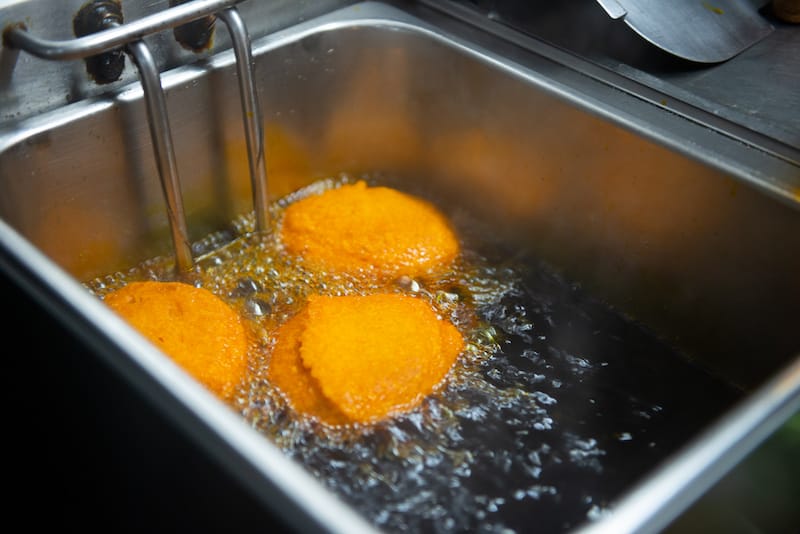
There are many Brazilian restaurants in Lisbon these days, but few specialize in the dishes of Brazil’s predominantly Black northeast, and Carol quips that her restaurant is the unofficial “Embassy of Bahia.” And as if to remind diners that acarajé is more than just food, she can almost always be found wearing distinctive, colorful Bahia-style dresses and headdresses.
After emerging from the oil, the acarajé is not yet finished. At Acarajé da Carol, it’s sliced in half and is stuffed with various other optional elements: vatapá, a rich paste that blends some sort of starch, cashews and/or peanuts, coconut milk, ginger and dendê oil; vinaigrette, a salad-like condiment of diced tomatoes, peppers and onions that, rather misleadingly, contains no vinegar; and dried and deep-fried shrimp.
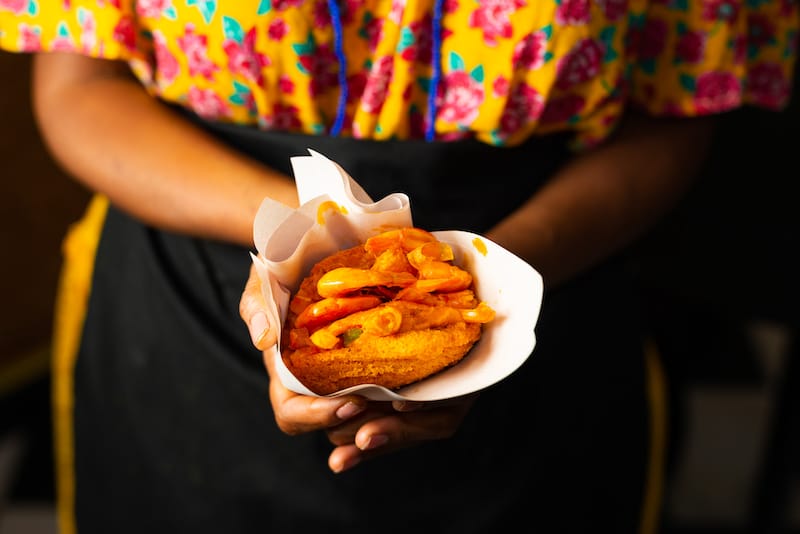
“In Bahia, people eat acarajé by hand, like a burger – they call it the ‘burger of Bahia,’” Carol tells us. At her restaurant, the acarajé is available this way or no prato, “on a plate,” served with a fork and a knife, presumably a concession for local diners.
The final touch is an optional chili condiment served in tiny glass jars, a blend of fresh chilies, vegetable oil, salt and garlic. It’s searingly spicy and pleasantly fragrant; only a few drops are needed.
“People in Bahia love chili! We can’t cook anything without chili,” says Carol of the condiment.
The result is a dish that practically glows and that blends crispy and soft, hot and fresh, savory and spicy – attributes that stand out particularly in Lisbon, where deep-fried dishes are often made hours in advance, and where chili can be scarce. Pure magic, if you ask us.
Austin BushAustin Bush
Published on May 18, 2023
Related stories
April 4, 2024
LisbonQuick Bite: On this food tour in Lisbon, we’ll experience a cultural feast, tasting some of the most diverse bites of the city’s gastronomy and meeting the people behind them. The oldest city in Western Europe, once the hub of a trading empire that connected Macau in the east to Rio de Janeiro in the…
February 23, 2024
LisbonMozambican, Portuguese and Cantonese – with a fair bit of Indian thrown in. On the surface, it’s an utterly unlikely culinary mashup. But it makes perfect sense at Bula Bula, a restaurant on Lisbon’s northern outskirts. The husband-and-wife owners of Bula Bula, Ana Lee and Fernando Ho, are ethnic Chinese who can trace their ancestry…
July 13, 2023
LisbonWe’re in a small café in Lisbon’s Madragoa neighborhood, and all of the disparate dishes loading down the table in front of us – small bread-like balls, a dish that resembles a small crepe, granola studded with flakes of grains, a pudding-like dessert – have one ingredient in common: cassava. “Cassava is known as the…







































